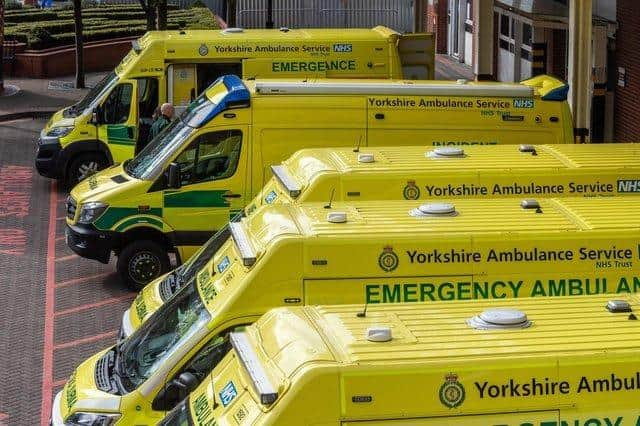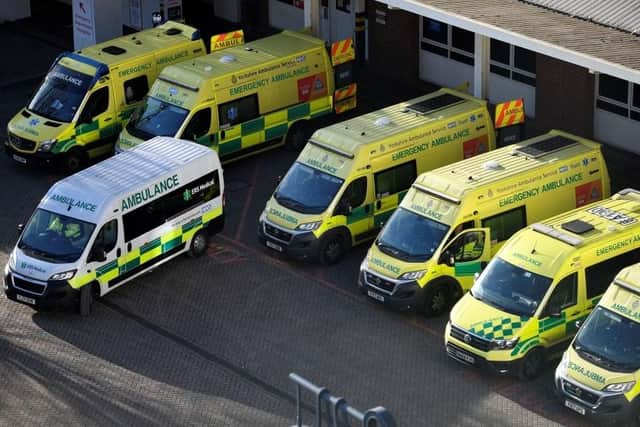Ambulance response times in Yorkshire fail to hit targets – with patients left waiting hours for emergency care
and live on Freeview channel 276
None of the 11 trusts across England met targets for reaching patients with life-threatening conditions within an average of seven minutes in June.
New NHS data shows it took Yorkshire Ambulance Service paramedics an average of 43 minutes to reach patients with category 2 emergencies, such as strokes – far below the 18-minute target.
Advertisement
Hide AdAdvertisement
Hide AdDr Tim Cooksley, president of the Society for Acute Medicine, said the situation “remains unacceptable”.


“Performance data now routinely illustrates that patients are continuing to experience overcrowding in acute care settings with flow throughout the system impaired,” he added.
Yorkshire Ambulance Service NHS Trust told The Scarborough News it continues to experience high levels of demand for its services.
In a statement, a trust spokesperson said: “This protracted period of operational pressures is being managed in line with the plans that we have in place to protect our core services.
Advertisement
Hide AdAdvertisement
Hide Ad“Unfortunately, there are patients who are facing delays and we are very sorry that we are unable to respond to them as quickly as we would like.


“This has been exacerbated by handover delays at busy hospitals and is something which needs to be addressed and minimised to improve patient care and experience, as well as reduce waiting times for those needing an emergency ambulance response in our communities.”
Every ambulance trust in England missed response time targets for all four categories of call-outs.
For the least serious calls, patients in Yorkshire were left waiting an average of six hours and 45 minutes.
Advertisement
Hide AdAdvertisement
Hide AdProfessor Sir Stephen Powis, national medical director for NHS England, said: “There is no doubt the NHS still faces significant pressures, from rising Covid admissions, thousands of staff absences due to the virus, the heatwave, and record demand for ambulances and emergency care."
It was also the busiest June ever for 999 calls, with almost 900,000 answered, and the number of life-threatening category 1 call-outs reaching a record high for the month of June, of 79,436.
The trust said that life-threatening conditions are always prioritised and urged the public only to call 999 when it is a serious emergency. Less serious illness or injury can be treated via a pharmacy, GP surgery, urgent care centre, self-care or call 111.